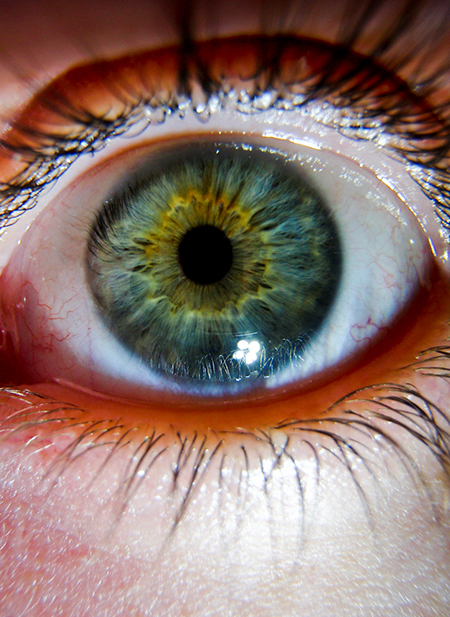 |
The researchers developed a double-layer soft contact lens that utilizes a sensing modulus with a wireless power transfer (WPT) circuit for drug administration. The range of the sensor in the upper layer is >5 to 50 mmHg. An air film is sandwiched between the lens layers. Increases in IOP compress the air which produces signals from the WPT circuit. The inner hydrogel layer is brimonidine-loaded. (Ophthalmic brimonidine is used to lower pressure in the eyes of patients who have glaucoma.) The WPT receiver generates alternating voltages, wirelessly connected to an external antenna that records the IOP signal and triggers drug delivery if needed through the electric migration of the positively charged brimonidine drug into the aqueous chamber.
At this time, the WTCL has been tested live only on rabbit eyes, but the results confirmed that the sensor could be used to rapidly reduce IOP with prolonged effects, as compared to tonometry and eye drops. The WTCL would be especially beneficial in cases of acute angle-closure glaucoma, which occurs due to a sudden spike in IOP. What’s more, the researchers say that the WTCL is compatible with standard soft lens manufacturing processes.
Glaucoma is a leading cause of irreversible blindness in the United States and the world, and more than three million Americans are living with glaucoma today. The risk of glaucoma increases with age, and the incidence is expected to increase as more people live longer. Patients have also shown poor compliance with self-administering eye drops. A wireless, minimally invasive, sensitive, reliable, soft, compact, lightweight, and reusable device for constant IOP monitoring and effective, on-demand ocular drug delivery has great potential for patients at risk for the sight threatening effects of this disease.
Learn more about eye conditions that affect and aging population with our CE, The Mature Contact Lens Patient, at 2020mag.com/ce.













